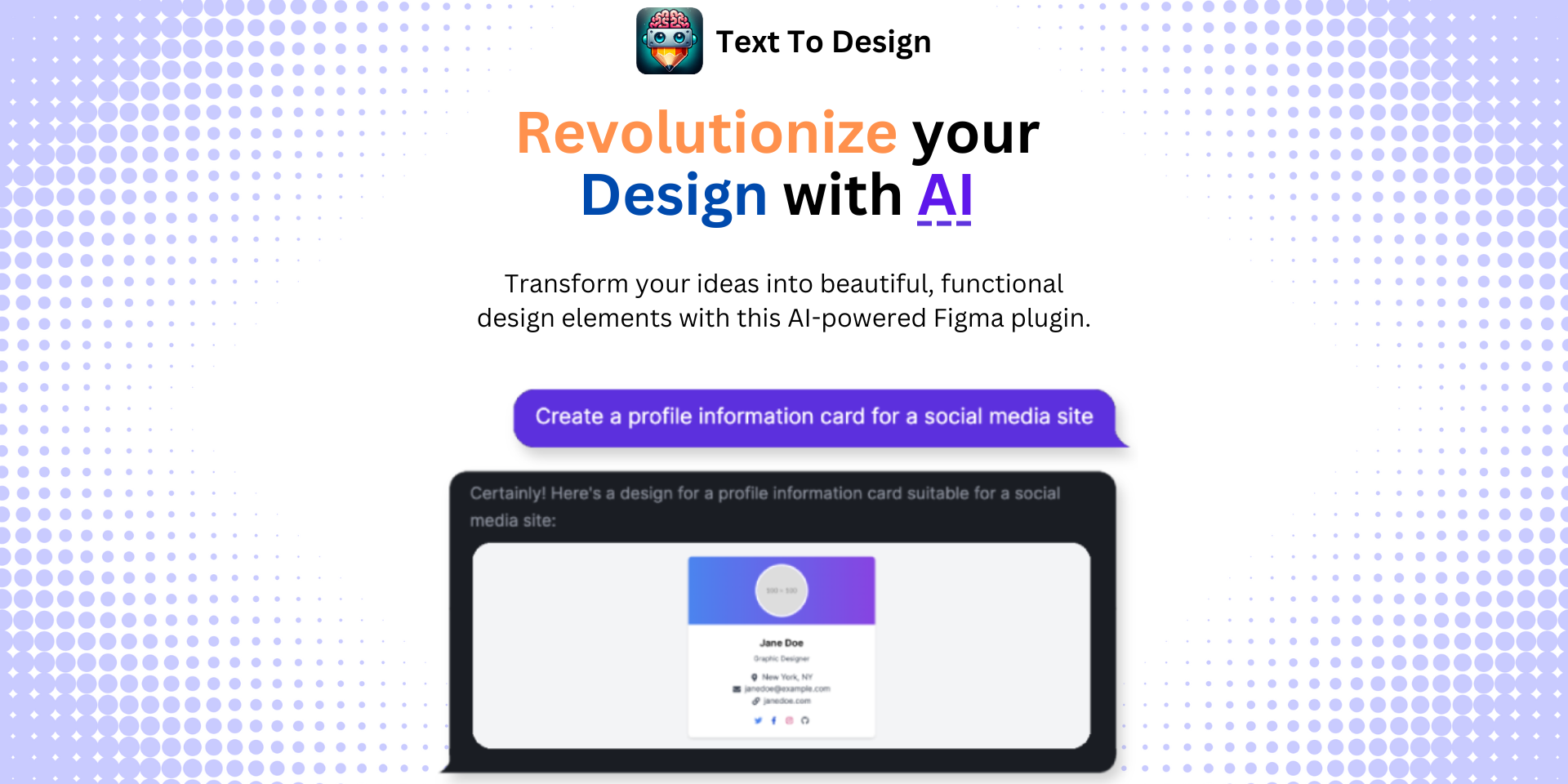Figma UI Design Trends 2025: Innovating the Future of Design
No results found
2/4/2025
Figma UI Design Trends 2025: Innovating the Future of Design
In the ever-evolving world of digital design, staying updated with the latest trends is essential for designers who seek to create impactful and user-friendly interfaces. As we step into 2025, Figma continues to be at the forefront of design innovation. This blog post explores the emerging UI design trends of 2025, focusing on how these trends can be effectively implemented using Figma.
Understanding the 2025 Design Landscape
With each passing year, design trends evolve to meet the changing expectations of users and the technological developments in the industry. In 2025, key trends shaping the UI design landscape include the consolidation of design variables, the elegant glassmorphism style, and the simplification of design processes through opacity adjustments.
Embracing the Power of Opacity
One of the notable trends in 2025 is the strategic use of opacity to manage design variables. By reducing the number of variables through opacity adjustments, designers can create clean and cohesive designs that streamline the user experience. This approach not only simplifies the design process but also enhances the visual appeal of the interface.
Key Benefits:
- Simplification: Reducing variables simplifies the design system, making it easier to manage and update.
- Consistency: Opacity adjustments help maintain a consistent style across different elements and components.
For more insights on leveraging opacity in your design systems, explore this Medium article for practical advice and resources1.
The Rise of Glassmorphism
Glassmorphism is not just a buzzword; it's a transformative design trend that utilizes frosted glass effects, transparency, blur, and vibrant backgrounds to create depth and elegance in user interfaces. Originally popularized by operating systems like Windows Vista and iOS 7, glassmorphism has found its way back into the spotlight in 2025, thanks to its ability to create visually engaging and interactive interfaces2.
Key Characteristics of Glassmorphism
- Transparency and Blur Effects: These elements create a sense of space and hierarchy, effectively guiding user attention.
- Multi-Layering: Vibrant backgrounds provide contrast to transparent layers, enhancing visibility without overwhelming the user.
- Subtle Borders and Shadows: Soft borders and shadows help differentiate layers, contributing to a more interactive experience.
To dive deeper into implementing glassmorphism in Figma, visit this comprehensive Weavely blog post3.
Harnessing Figma for Future-Ready Designs
Figma continues to empower designers with its collaborative and innovative platform. Here are a few ways Figma is leading the charge in 2025:
Collaborative Features
Figma's real-time collaboration tools make it easier for design and development teams to work together, regardless of their location. This fosters a seamless workflow and encourages creativity.
Advanced Plugins
Explore the latest plugins that enhance your design capabilities in Figma. For instance, the Text To Design Figma Plugin transforms your text descriptions into innovative design ideas, streamlining the design process and sparking creativity4.

Community and Resources
Figma's vibrant community is a treasure trove of resources, from UI kits to design systems. Engage with other designers and access a wealth of shared knowledge to stay ahead of the curve.
Call to Action: Elevate Your Design Game
As we embrace these cutting-edge design trends, it's the perfect time to integrate tools that enhance your creativity and efficiency. Consider exploring the Text To Design Figma Plugin to transform your design approach.
For more tips and resources on mastering Figma, visit Text To Design and explore our offerings to elevate your design game.
Conclusion
The UI design trends of 2025 are shaping a future where interfaces are not only functional but also aesthetically enchanting. By leveraging Figma's powerful tools and staying abreast of emerging trends such as opacity management and glassmorphism, designers can craft experiences that captivate and engage users.
For further reading and resources, check out:
- UI/UX Trends for 2025
- Graphic Design Trends
- Interaction Design Foundation for the latest design insights
With these insights, embrace the innovations of 2025 and redefine what's possible in digital design. Happy designing!
Footnotes
Step Into the Future of Design with your AI Copilot
Join +40K designers revolutionizing their workflow with AI. Install our Text-to-Design plugin in just a few clicks to unlock your creative potential. Start for free and instantly generate designs for your project.